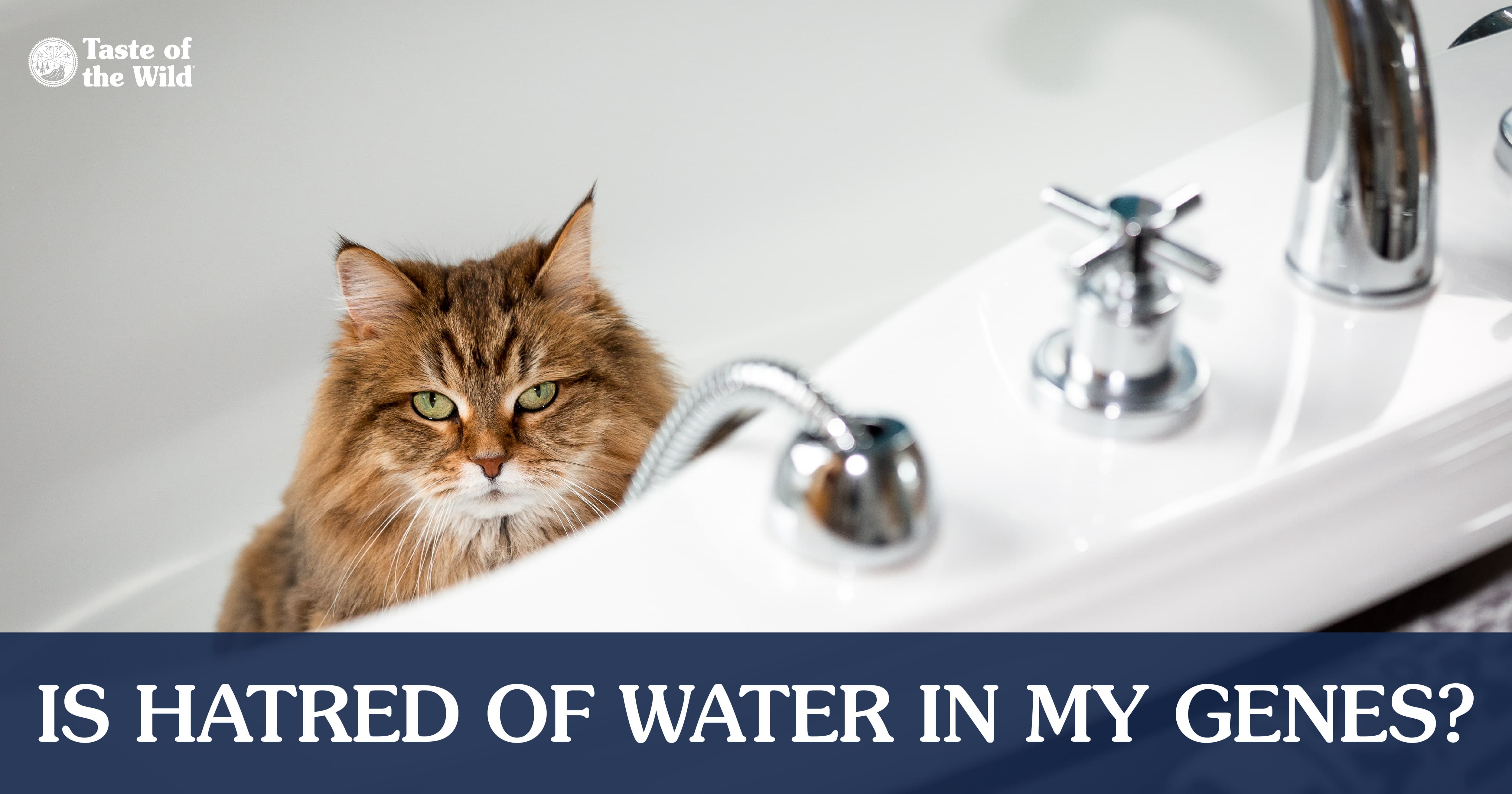
Splish, splash, it’s time for your cat to take a bath! But … isn’t it common knowledge that cats hate water? You may be looking at that bathtub thinking, “This won’t end well,” and you wouldn’t be alone.
But do all cats really hate water? Let’s dive into whether this might be a myth and how to help your aqua-curious kitty indulge in a relaxing soak.
Every Cat Has a Water Origin Story
There could be more than one reason why your furry friend does or does not like water. Contrary to popular belief, experts have concluded that some personalities and breeds DO gravitate toward water. Cat breeds who typically enjoy water include Maine coon, Turkish van, Turkish angora, Highlander, Egyptian mau, Bengal, Japanese bobtail, American shorthair and Norwegian forest cat. What’s different about these breeds specifically? They all have water-resistant fur, which means getting wet isn’t as big of a deal as it is for moisture-absorbent kitties.
Wet, water-absorbent fur means your feline is less nimble, and it takes quite a while for their coat to dry. As you can imagine, sopping wet and weighed down aren’t exactly a great time for a cat. Or anyone, for that matter.
If you’ve ever watched a cat groom themselves, you’ll notice how meticulous they are at keeping their fur clean — they spend a great deal of their day ensuring their coat is picture-purrfect. Water sources often contain chemicals and dissolved minerals that a cat’s sensitive nose can detect. Your kitty may avoid water to prevent their fur from becoming dirtied with unnecessary smells or contaminates.
Another reason your cat might hate water can be traced back 10–12 million years. Many cat breeds originated in arid, desert climates and had little exposure to rivers, lakes or streams. Even today a cat’s urine is more concentrated than that of a human or dog because of their dry-land origins — it’s not far-fetched to think their ancestors’ preferences for staying dry still run deep in this mammal.
Lastly, your pet could be afraid of water due to a bad encounter with water. A negative experience like falling into a pool or being forced into a tub of water could have long-lasting effects. It may be extremely difficult (if not impossible) to help tame their fear of water moving forward. For new pet parents, if you have not introduced your little fluff to water yet, keep this in mind and introduce your kitten to water with care and caution.
From Cat to Aqua-Cat
How do you help your water-curious feline enjoy water at a level they are comfortable with? For starters, cats learn from their pet parents. Show your feline water is harmless by letting them into the bathroom while you take a relaxing bath or shower. At first, they may have no interest in what you’re doing, but over time they may see water isn’t harming you and jump into an empty tub. Remember to let them explore at their own pace.
Next, try turning on a faucet in the kitchen or bathroom to let them explore running their paws through the water. They may bat at the water or drink it, so make sure the water is not too hot or not too cold. Getting their paws wet will slowly desensitize them to water. If your furry companion shows no interest in the running faucet or remains timid around H2O, remember that it’s okay. As mentioned previously, not all cats are keen on getting wet.
Once your furry friend seems comfortable with getting their paws wet in the sink, consider purchasing cat toys designed for water. Local pet stores or online venues offer a variety of interactive water toys for cats — some look like fish and move around in H2O. When you add a moving toy fish to a shallow bathtub, you’ll see your cat’s natural instincts come alive. Chances are your pet will see the toy and go into hunting mode, maybe even immersing themselves into the shallow tub.
After your cat is comfortable with a shallow amount of water, begin adding a bit more water to the tub each time you bring out the interactive toys. Also add a step stool or platform for your cat to easily enter and exit the water if they get uncomfortable. This reinforces that water can be safe and that they can trust their new, wet environment.
It may take time before you see a swimming kitty in your bathroom, but with patience, care and affection there’s a possibility your feline will go from hating water to aqua-cat extraordinaire. No more looking at the bathtub thinking, “This won’t end well!”
RELATED POST: How Often Should You Bathe Your Dog or Cat?
The information in this blog has been developed with our veterinarian and is designed to help educate pet parents. If you have questions or concerns about your pet's health or nutrition, please talk with your veterinarian.
